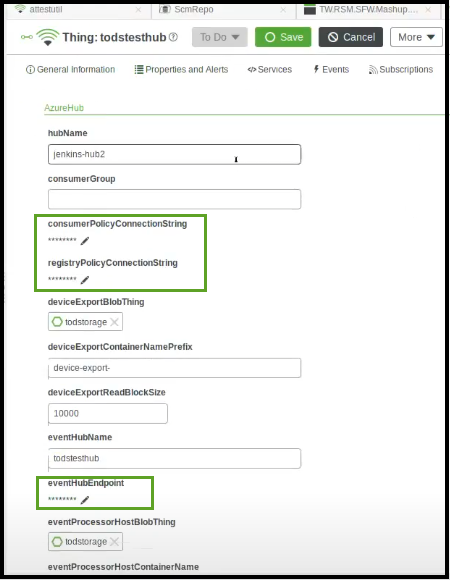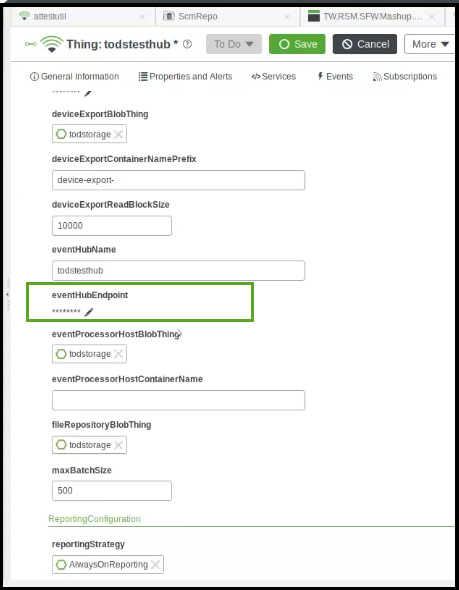Step 5. Create Azure IoT Entities in ThingWorx Composer
From ThingWorx Composer, create the following Azure IoT Things:
1. Add at least one new Thing for an Azure Storage Container. Associate the Thing with the AzureBlobStorageTemplate Thing Template.
2. Click Save and then select Configure to display the configuration settings.
3. Supply values for the configuration settings for this Thing:
a. accountName — Your Azure Storage Account name
b. connectionString — The value from > > > > .
4. Add an Azure IoT Hub Thing for the Azure IoT Hub with which the Connector will communicate. Associate the Thing with the AzureIotHubTemplate Thing Template.
Click Save and the Configuration.
In the Configuration page for the Azure IoT Hub Thing, supply values for the following settings for this Thing:
a. hubName — The name you used when creating your Azure IoT Hub. By default, this hub name serves as the group name for binding the Azure IoT Devices and Azure IoT Edge devices to their corresponding entities in the ThingWorx Platform.
b. consumerPolicyConnectionString — The value from > > > > >
|
|
c. registryPolicyConnectionString — The value from > > > > > .
d. deviceExportBlobThing — Select the Azure Blob Storage Thing created in Step 1.
e. eventHubName — Enter the value from > > > .
f. eventHubEndpoint — Enter the value from > > > .
g. eventProcessorHostBlobThing — Select the Azure Blob Storage Thing created in Step 1.
h. fileRepositoryBlobThing — Select the Azure Blob Storage Thing created in Step 1.
i. Keep the default values for all other properties. For example, if consumerGroup is not configured in Azure, leave this field blank.
The following figures show the configuration properties for the Azure IoT Hub. Note that the connection strings and eventHubEndpoint are considered "secrets" and will be encrypted when sent to the Connector. In this page, the values are shown with asterisks.


5. Create a Thing for every Azure IoT Edge device that you want to connect to ThingWorx. Under Base Thing Template, select the AzureIotThing Thing Template for every AzureIotThing.
6. To ensure proper routing of messages, set the following property for each Azure IoT device Thing:
◦ gatewayThing — Select the Azure IoT Hub Thing created in Step 2 above.